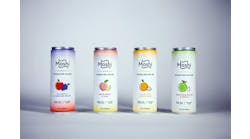"Why do so many new products fail?" is the most common question asked by my food-marketing students. I tell them that if I could answer that question, I would not just live in New Jersey; I would own it.
However, there are a few lessons that can be learned from both the successes and failures of previous new product introductions. Now the problem with lessons is that nothing is going to be so revolutionary that your jaw drops and you say, "I had no idea I should have done that." In fact, to paraphrase Peter Drucker, we don't need so much to be lectured as reminded.
I understand the travails of trying to get the job done professionally and effectively, with top management breathing down everybody's necks asking, "How soon, how soon?" An R&D researcher told me that he hid his best ideas from top management as long as possible, because once they thought there was a "winner" in the pipeline, they tried to commercialize it faster than was good for the product development team. And we all know about managerial attention deficit disorder. They can't remain focused longer than many 4-year-olds.
The first lesson is to involve the consumer from day one. Everything should be focused on just two things: solving customer's problems or making them feel good. Look at the success of squeezable yogurts. They solve consumer problems. They are fun for kids, and easy and convenient for moms. The real added value is that moms feel good that they are giving their kids a nutritious snack. Squeezable yogurt just had to be a success! Sometimes the added value may seem so minor that it's overlooked, unless you're the consumer. Shredded cheese only shredded a few minutes of preparation time, but to the time-starved homemaker it was sufficient to warrant paying a little extra. Successful products almost always began by solving a consumer problem. There is no better way to discover those problems than getting consumers involved from the start.
The second lesson is that successful product development programs have a "charter" defining how the new product process will be executed. In many cases, scientists develop new technologies or concepts and then "throw them" at the market. In effect, they are saying, "We can do this, do you want it?" New product development cannot be serendipitous; it must be structured and systematic.
The corollary to lesson two is that everyone involved in the new product introduction -- sales, R&D, marketing and accounting (no, forget accounting) -- should be involved in the early stages and have a defined role. The concept of "silos" must be removed from the new product process as quickly as possible. The old model of having R&D find things, hand them to Operations and Engineering to figure out how to make it, and then call in Sales and Marketing to sell it is long gone. The new product team must be composed of all the above people and they must manage the process together with common goals. If the product is a success they can all take credit, and if it fails it isn't a marketing failure or an operations failure, but a new products team failure.
One outcome of teams is serious disagreement and arguments. That's OK as long as it doesn't get personal. There are legitimate arguments in the process and it is better to settle them inside the company rather than in the marketplace. Teams are not a place for sycophants or toadies. Strong-willed people should be a major part of the team.
The final lesson is that successful new product ventures must have an infrastructure that supports the process. I don't mean just money (but that helps). I'm talking about a myriad of activities and policies that ensure the team has what it needs.
There must be procedures to let people explore new ideas. One company told the new product team to attend a lot of food conventions, but not in their category! They were to go look at what others were doing. An executive told his company that he wanted to go to the restaurant show, but the request was denied because his company didn't sell anything to that segment. I believe that was the point. Team members should be given time to visit stores and talk to customers and consumers.
In one major company, product developers had to conduct a focus group in order to talk to consumers. Anyone should be able to talk to consumers anytime they want without permission. By the way, the same company also prohibited conversations with retailers or distributors, since both were considered the purview of the sales force.
In the past five years, new products represented nearly half of all brands and more than half of growth, according to Information Resources Inc. New products are the life's blood of the food industry and should be allocated the resources commensurate with their importance.
John L. Stanton is a professor of food marketing at St. Joseph's University in Philadelphia. He can be contacted at (610) 660-1607; fax (610) 660-1604; e-mail at [email protected]; or www.johnLstanton.com.

